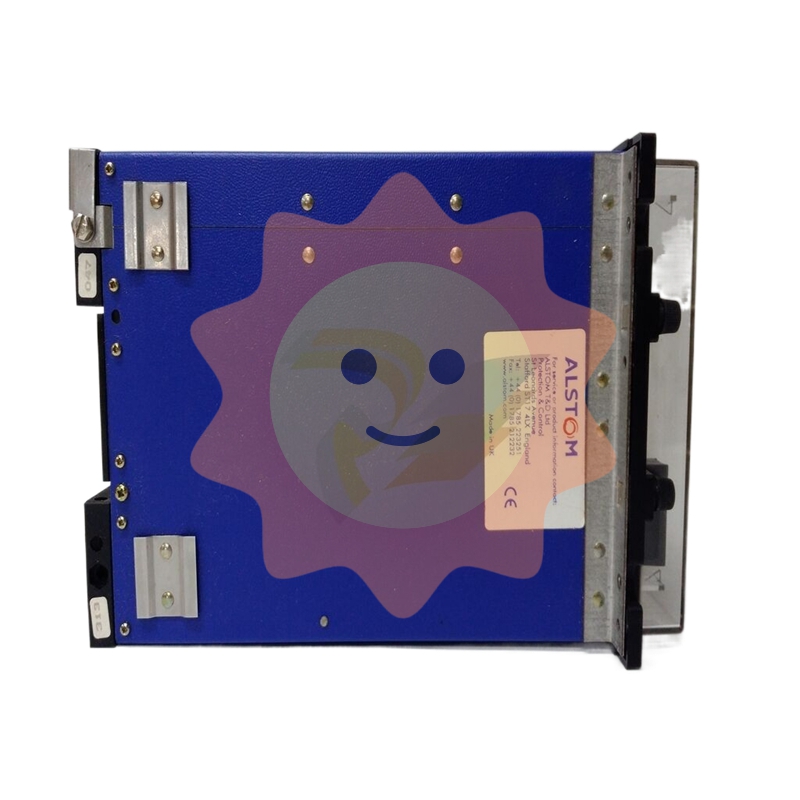We will actively promote investment in new infrastructure development
Infrastructure is an important support for economic and social development. Accelerating the construction of new infrastructure is an important measure to promote current economic growth and lay a solid foundation for long-term development. This year's "Government Work Report" proposed to "strengthen the construction of new infrastructure." In the context of coping with the impact of the epidemic and promoting the recovery of economic growth, the construction of new infrastructure has become a policy focus and hot topic of attention from all sectors of society. At present, the understanding of the scope and function of new infrastructure construction is not consistent, so it is necessary to deepen the research on this issue and provide necessary theoretical support for practical development.
The meaning and scope of the new infrastructure
Not long ago, the National Development and Reform Commission clarified the scope of the new infrastructure, proposed that the new infrastructure is a new development concept as the guide, driven by technological innovation, information network as the basis, for high-quality development needs, to provide digital transformation, intelligent upgrading, integrated innovation and other services infrastructure system. This definition more comprehensively summarizes the basic elements of the new infrastructure, reflecting the current policy philosophy and requirements. It is important to see that the focus of the new infrastructure is on the "new", that is, what services are provided for and who will invest in the construction.
Infrastructure includes public infrastructure and dedicated infrastructure. Public infrastructure, such as transportation, environment and other infrastructure, provides support and services for the operation of all industrial sectors, and generally focuses on government investment and construction. Dedicated infrastructure, such as agricultural, industrial, energy and other infrastructure, provides support and services for the operation of specialized industrial sectors, and is generally invested by the government and enterprises according to the scope of application of the facility. The new infrastructure includes public facilities and dedicated facilities, but generally belongs to the dedicated nature of the infrastructure, it is a difference from the traditional infrastructure, is mainly for high-tech industries and applications to provide support and services, and market-oriented investment and construction, by the government and enterprises according to the characteristics of the application of the facility investment and construction. Therefore, in theory, the complete meaning of new infrastructure should include two elements: "serving high-tech industries and applications" and "focusing on market-oriented investment and construction". Clarifying these meanings is conducive to determining policy orientation and guiding investment behavior, and better playing the role of social investment.

On the basis of defining the concept, we will further define the scope of the new infrastructure. At present, the new infrastructure mainly includes three aspects: First, information infrastructure. It mainly refers to the infrastructure generated based on the evolution of a new generation of information technology, such as the communication network infrastructure represented by 5G, Internet of Things, industrial Internet, etc., the new technology infrastructure represented by artificial intelligence, cloud computing, blockchain, etc., and the computing power infrastructure represented by data centers and intelligent computing centers. The second is the integration of infrastructure. It mainly refers to the deep application of Internet, big data, artificial intelligence and other technologies to support the transformation and upgrading of traditional infrastructure, and then the formation of integrated infrastructure, such as intelligent transportation infrastructure. Third, innovation infrastructure. It mainly refers to the infrastructure that supports scientific research, technological development, and product development with public welfare attributes, such as major scientific and technological infrastructure, science and education infrastructure, and industrial technological innovation infrastructure. This is a broad scope, which is conducive to our better understanding and grasp the direction of new infrastructure construction.
The key is to coordinate and handle the three relationships
In general, the promotion of new infrastructure investment ADAPTS to China's current economic situation, reflects the fundamental need to promote the upgrading of industrial structure and high-quality economic development, which is conducive to improving the level of the industrial chain and ensuring the security of the supply chain, and is conducive to combining stable growth with high-quality development. To promote investment in new infrastructure, we need to strengthen top-level design, formulate relevant guidelines and development plans on the basis of in-depth research, guide all regions to formulate feasible investment plans, and highlight investment priorities based on local conditions. It is also necessary to strengthen overall planning and coordination, and promote the handling of the following relations under the condition of giving full play to the enthusiasm and creativity of all parties.
First, we need to balance the relationship between government investment and private investment.
An important difference between the new infrastructure and the traditional infrastructure is that the new infrastructure mainly relies on market investment, and the government is not the main investor. The government's expansion of investment in new infrastructure is mainly to solve the problem of public investment, especially the expansion of public infrastructure investment required for scientific and technological research and innovation, and at the same time play a counter-cyclical adjustment of market demand and guide social investment. For the special infrastructure investment in high-tech industries and the application of high-tech to transform traditional infrastructure investment, government investment mainly plays the role of "four or two", and focuses on stimulating and guiding private capital investment.

Judging from the current situation and development trend, we should strengthen the necessary guidance for local governments' new infrastructure investment, and prevent some local governments from taking all major projects and arranging investment plans comprehensively for new infrastructure investment. It is necessary to guide local governments to determine different priorities for new infrastructure investment based on their actual needs and financial resources, so as to avoid the problem of a rush of similar new infrastructure investment and excessive convergence of investment projects in different regions, and avoid the problem of structural shortage of supply caused by excessive investment and demand in some areas in the short term and structural excess in the long term. Relevant macro management departments should pay attention to policy guidance and coordination, timely release of new infrastructure investment information, guide local research and development of reasonable investment plans, and guide social capital to expand new infrastructure investment through planning.
Second, focus on promoting coordinated development of new infrastructure investment and traditional infrastructure investment.
According to the scope determined by the National Development and Reform Commission, the application of high and new technologies to transform traditional infrastructure belongs to the content of new infrastructure, and the investment scale of this part is relatively large, so the broad new infrastructure investment has a larger proportion and pulling power in the entire fixed asset investment. What we want to discuss now is the relationship between broad new infrastructure investment and general traditional infrastructure investment. In general, traditional infrastructure is in addition to the application of high-tech transformation of traditional infrastructure content, mainly "iron Gong machinery" and other infrastructure investment. The main issues to be noted are as follows: First, new infrastructure investment should not be used to negate traditional infrastructure investment. The two have different roles, orientations and priorities, which are needed to cope with the impact of the epidemic and economic and social development. Investment in traditional infrastructure is large and extensive, and it still has a strong driving force for investment and economic growth. It may play a more direct role in ensuring employment and people's livelihood, but it is mainly limited by the government's public investment capacity and local government debt risks. New infrastructure investment is likely to expand rapidly, playing an unprecedented role in driving investment and promoting high-quality economic development, but growth prospects also depend on the degree of response to market-oriented investment. Second, new infrastructure investment and traditional infrastructure investment are mutually reinforcing. Traditional infrastructure provides the necessary external conditions for the development of new infrastructure to solve the problem of public facilities and environmental support, and the development of the whole new infrastructure should be based on the development of traditional infrastructure to a certain extent. The development of new infrastructure can expand more space for traditional infrastructure, drive the transformation and upgrading of traditional infrastructure, especially through the application of high and new technologies to transform traditional infrastructure, enhance the new momentum and new prospects of traditional infrastructure, and enhance the efficiency and sustainability of traditional infrastructure investment. Third, it is necessary to coordinate the investment relationship between new infrastructure and traditional infrastructure. In the short term, traditional infrastructure investment may still account for a large proportion, most of the major investment projects determined by the central departments are still traditional infrastructure content, and the division of the investment proportion between the central and local governments will also drive the stable investment of local governments in traditional infrastructure. But at the same time, we should also pay attention to the situation of new infrastructure investment "big thunder and little rain", the rapid expansion of new infrastructure investment with market-oriented investment as the main body depends not only on the degree of attention and promotion of governments at all levels, but more importantly, whether it can effectively stimulate private investment. From this perspective, to promote the coordinated development of new infrastructure investment and traditional infrastructure investment, so that new infrastructure investment can truly assume multiple development missions, the key is to encourage, support and guide the entry of private capital, which requires research and adoption of effective policy measures, in particular, to focus on deepening reform and opening up.

Third, we need to balance the relationship between government policy guidance and market allocation of resources.
An important difference between new infrastructure investment and traditional infrastructure investment is that the investment prospects and returns of new infrastructure investment are more unstable. The promotion of new infrastructure investment mainly relies on market-based investment, and it is necessary to establish a mechanism in which government departments take the stage and market entities play the role. In order for the government to promote and guide new infrastructure investment, it is necessary to change the administrative and planned management mode and implement a market-oriented management mode. It is necessary to continue to deepen the reform of "delegating management services" and implement the regulatory system of negative lists, so that the market plays a decisive role in the allocation of resources, and investors can make decisions and bear investment risks based on market information to a greater extent.
In terms of policy guidance, the government mainly does the following things: First, study and formulate plans for new infrastructure investment. For example, relevant central departments should study and formulate national plans for new infrastructure investment and development, and provincial government departments should also study and formulate plans for new infrastructure investment and development in line with local conditions. Investment planning should be coarse rather than fine, mainly play a role in releasing information and guiding investment. Second, we will deepen reform of the relevant investment and financing systems. It is necessary to rely more on reform methods and use market-oriented and law-based means to solve the institutional problems faced by new infrastructure investment and financing. In particular, we must adhere to deepening supply-side structural reform, adhere to problem-oriented, and support and help private enterprises to solve specific problems such as investment, financing, technology, and talent when entering the new infrastructure field. Third, we will further improve the policy environment. For example, improve the institutional arrangements related to new infrastructure investment and make up for institutional or institutional weaknesses; We will improve the business environment related to new infrastructure investment, implement relevant fiscal, tax, financing and other preferential policies, and give full play to the role of various intermediary services. In short, we should strive to create a more reform and opening up institutional environment, create a more relaxed and stable policy environment, create a more convenient and favorable business environment, and create a more fault-tolerant and incentivized innovation environment, so as to better promote investment in new infrastructure construction and inject strong impetus into economic development.
- EMERSON
- Honeywell
- CTI
- Rolls-Royce
- General Electric
- Woodward
- Yaskawa
- xYCOM
- Motorola
- Siemens
- Rockwell
- ABB
- B&R
- HIMA
- Construction site
- electricity
- Automobile market
- PLC
- DCS
- Motor drivers
- VSD
- Implications
- cement
- CO2
- CEM
- methane
- Artificial intelligence
- Titanic
- Solar energy
- Hydrogen fuel cell
- Hydrogen and fuel cells
- Hydrogen and oxygen fuel cells
- tyre
- Chemical fiber
- dynamo
- corpuscle
- Pulp and paper
- printing
- fossil
- FANUC
- Food and beverage
- Life science
- Sewage treatment
- Personal care
- electricity
- boats
- infrastructure
- Automobile industry
- metallurgy
- Nuclear power generation
- Geothermal power generation
- Water and wastewater
- Infrastructure construction
- Mine hazard
- steel
- papermaking
- Natural gas industry
- Infrastructure construction
- Power and energy
- Rubber and plastic
- Renewable energy
- pharmacy
- mining
- Plastic industry
- Schneider
- Kongsberg
- NI
- Wind energy
- International petroleum
- International new energy network
- gas
- WATLOW
- ProSoft
- SEW
- wind
- ADVANCED
- Reliance
- YOKOGAWA
- TRICONEX
- FOXBORO
- METSO
- MAN
- Advantest
- ADVANCED
- ALSTOM
- Control Wave
- AB
- AMAT
- STUDER
- KONGSBERG
- MOTOROLA
- DANAHER MOTION
- Bentley
- Galil
- EATON
- MOLEX
- Triconex
- DEIF
- B&W


email:1583694102@qq.com
wang@kongjiangauto.com

















































